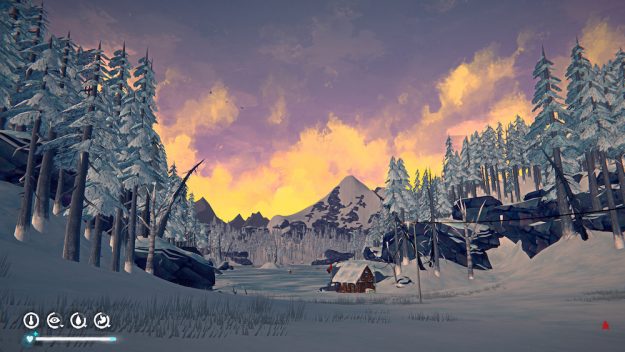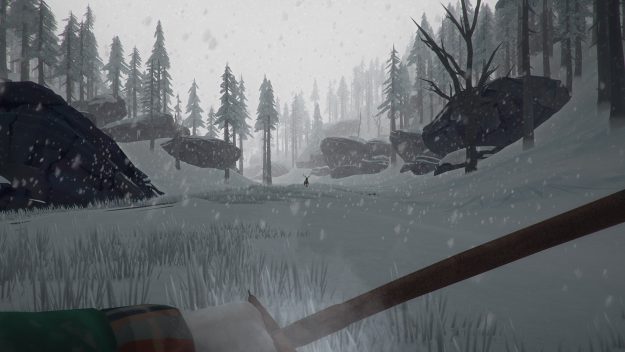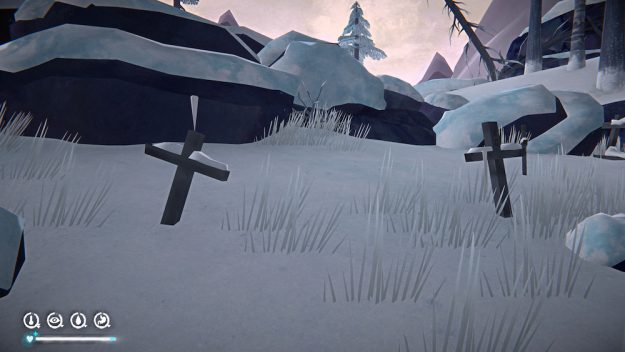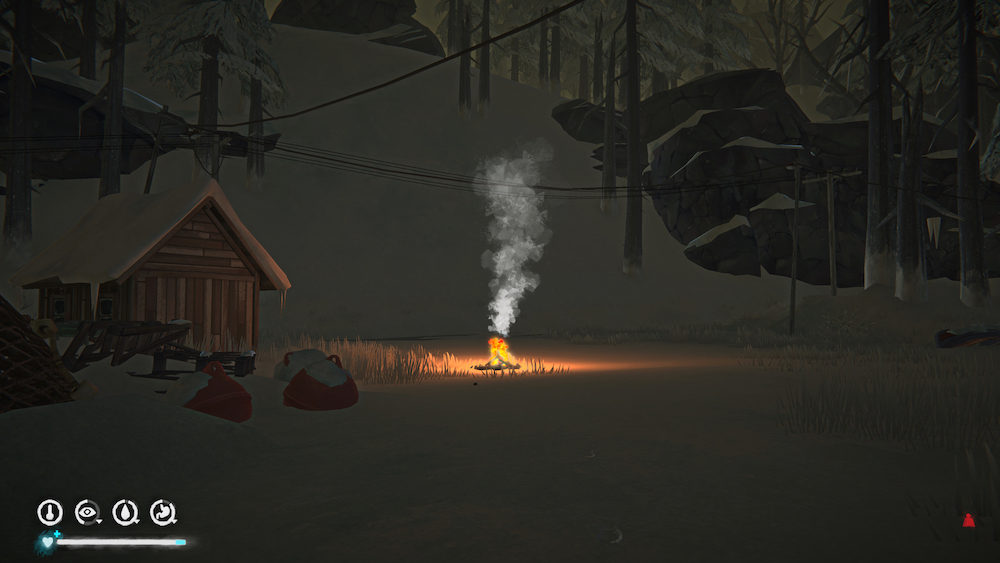The wind is picking up and the snow is coming down harder. Visibility has reduced; I can only see a few hundred feet in front of me. My hypothermia risk has increased, my energy has dipped, and I’m getting thirsty and hungry. I hear wolves howling in the distance. I realize that I must get back to my cabin before the blizzard hits, or I will die.
I am playing The Long Dark, a survival video game with the tagline “Welcome to the quiet apocalypse.” Set in the northern Canadian wilderness on the fictional Great Bear Island, players have to navigate a frozen world without electricity in the aftermath of a geomagnetic disaster. Players can travel from region to region to find loot, but eventually, all supplies will be depleted, and you will have to survive on your wits and skills. In the game’s survival mode, you are the only person on the fifty-square-kilometer island. You can choose one of four difficulty levels—pilgrim, voyager, stalker, or interloper—or choose a custom mode and set dozens of parameters to make it as easy or as difficult as you want to survive in the frigid Canadian north.

Playing in pilgrim mode, I awakened on Great Bear Island in the snow-covered expanse of mountainous northern Canada with little food or clothing. I scoured the empty houses to find outdated canned food, old granola bars, and some dusty old cans of soup that had been left behind when the last people departed. As I checked cupboards and cabinets, I found clothes—some in good condition and some very old, but enough to keep me warm—and a few basic tools—a hatchet, a hacksaw, and a hunting knife. My new equipment allowed me to heat up canned food, cook the meat and fish that I scavenged, and melt snow to have water to drink. As I explored the island’s various regions, I discovered more resources, as well as workbenches to repair tools and craft items to aid survival. Over time, my skills increased, and I learned how to use my resources more efficiently. But death was always right around the corner.
Vegans don’t survive on Great Bear Island; there’s no plant-based diet in sub-zero temperatures. As a Zen practitioner, I don’t want to kill even virtual animals, but that’s the only way to survive. The first time I used a rifle to kill a virtual deer, which had been peacefully grazing around Mystery Lake, I felt like I had torn apart the natural landscape. Sure, my character needed food to survive, but why was my life more important than the deer’s?

That deer sustained me for several days, and if I were to take down a bear, I could store the meat in the snow and survive off that for weeks. Still, I didn’t want to kill such majestic animals. Between catching fish or rabbits, I learned that fishing is the easiest and least violent way of acquiring food. While rabbits are abundant on Great Bear Island, you either have to catch them in snares or first stun them with stones and then snap their necks; I couldn’t use my virtual hands to kill bunnies. I chose to rely on snares for hunting. At least this way, when I collected them, they were already dead.
Impermanence is built into the game. Everything you possess wears out over time. Your clothes, your tools, your food—everything eventually goes bad. You have to repair your clothes and your shoes, and, in order to perform the repairs, you need to find items like sewing kits, bits of cloth, and pieces of leather. You can repair your hacksaw with scrap metal, and if you find a whetstone, you can use it to sharpen your hatchet and knife sharp, but it, too, will wear out. Zen teaches us that everything is impermanent, and I am always aware when playing The Long Dark that a time will come—if I manage to survive long enough—when nothing other than the bare essentials will remain.
The Zen expression “chop wood, carry water” describes what you have to do in The Long Dark. You chop wood to keep warm, cook food, boil water, and carry that water around as you travel. Every moment playing The Long Dark is the present moment. There’s no time to worry about what’s going to happen in a week or to dwell on past mistakes; all you can think of is how to stay alive. That’s the only goal of the game: to stay alive. In survival mode, there’s no golden ring or trophy. There’s only the satisfaction of making it through yet another day, discovering that you have not transitioned into “the long dark,” death.

The only humans you see in survival mode are frozen corpses. They remind you that your life is precious, that it won’t take much to lose it, and that you better stock up on wood, catch some fish, and prepare for the next blizzard.
The Long Dark is engrossing, as you feel the stress of your character when the temperature goes down and hunger sets in, and you don’t know if you’ll make it back to your base before the blizzard hits. Unlike many other video games, The Long Dark’s survival mode has permadeath: when you die, you must start over from the beginning. There is no rebirth; you can’t go back to a previous save and have a do-over. As Dogen said in Shoji, a chapter of his Shobogenzo, “There is nothing such as birth and death to be avoided; there is nothing such as nirvana to be sought. Only when you realize this are you free from birth and death.”
With this in mind, you can play The Long Dark and be in the moment, realizing that this is the only moment that you have, that the past is gone, and that the future is not yet here. Death will come, and it will be all right. But for now, you can marvel at the beautiful landscapes and the silence of the wilderness, and keep on chopping wood and carrying water.
Thank you for subscribing to Tricycle! As a nonprofit, we depend on readers like you to keep Buddhist teachings and practices widely available.
